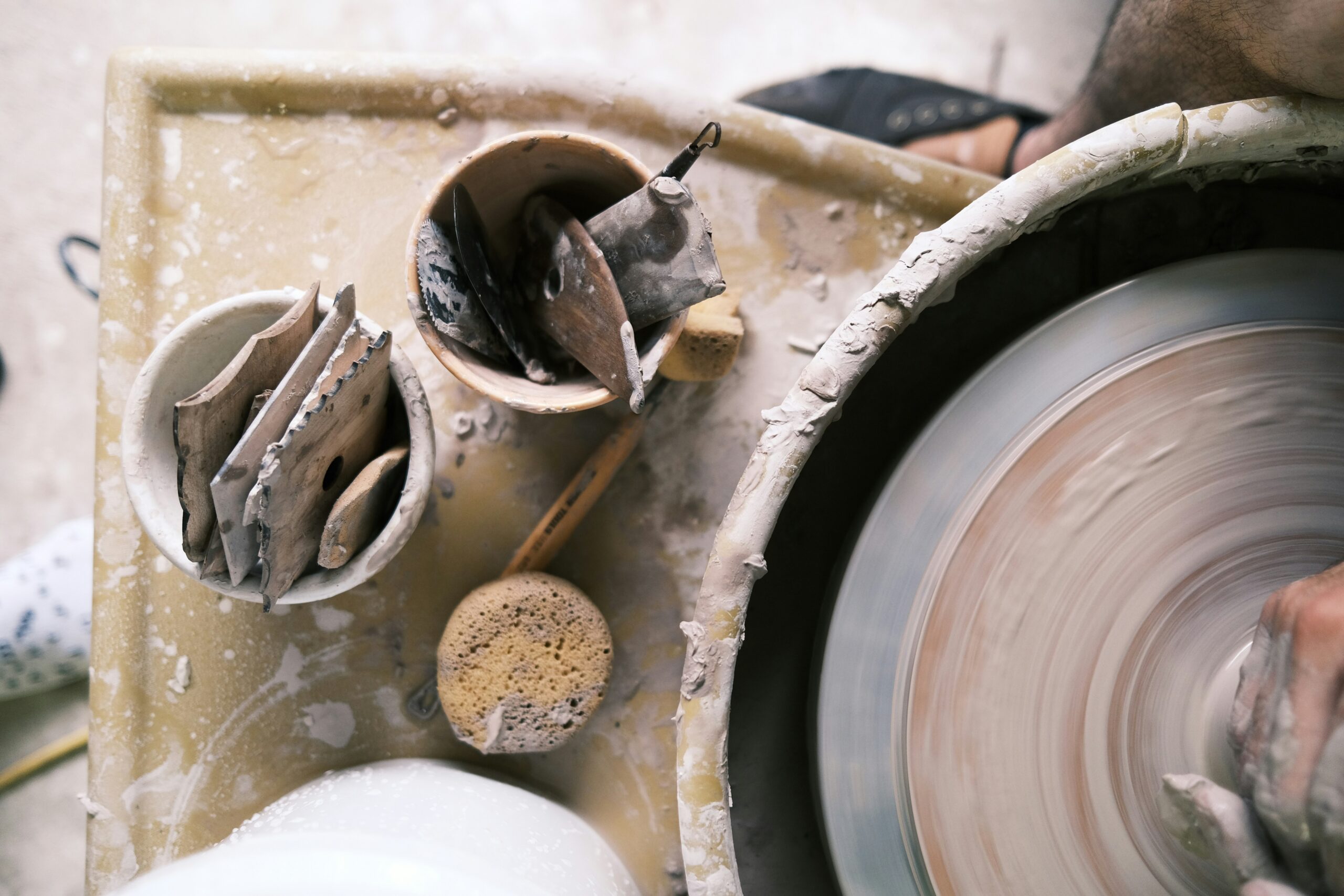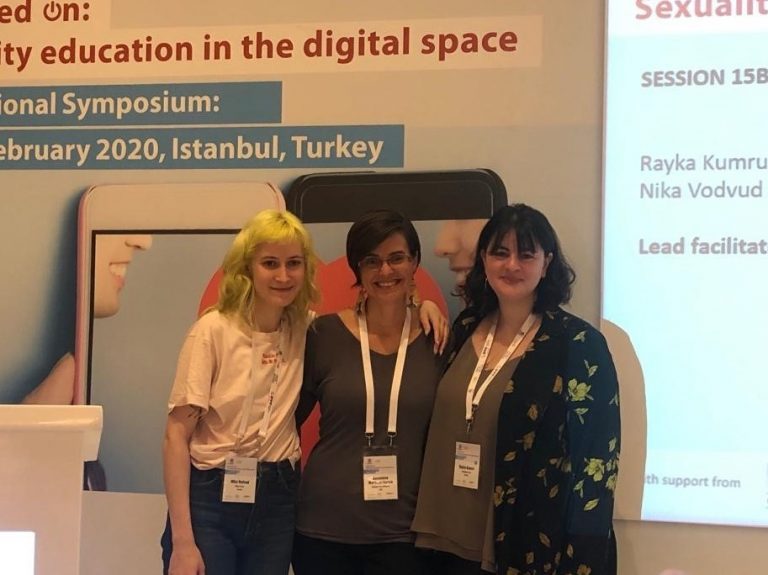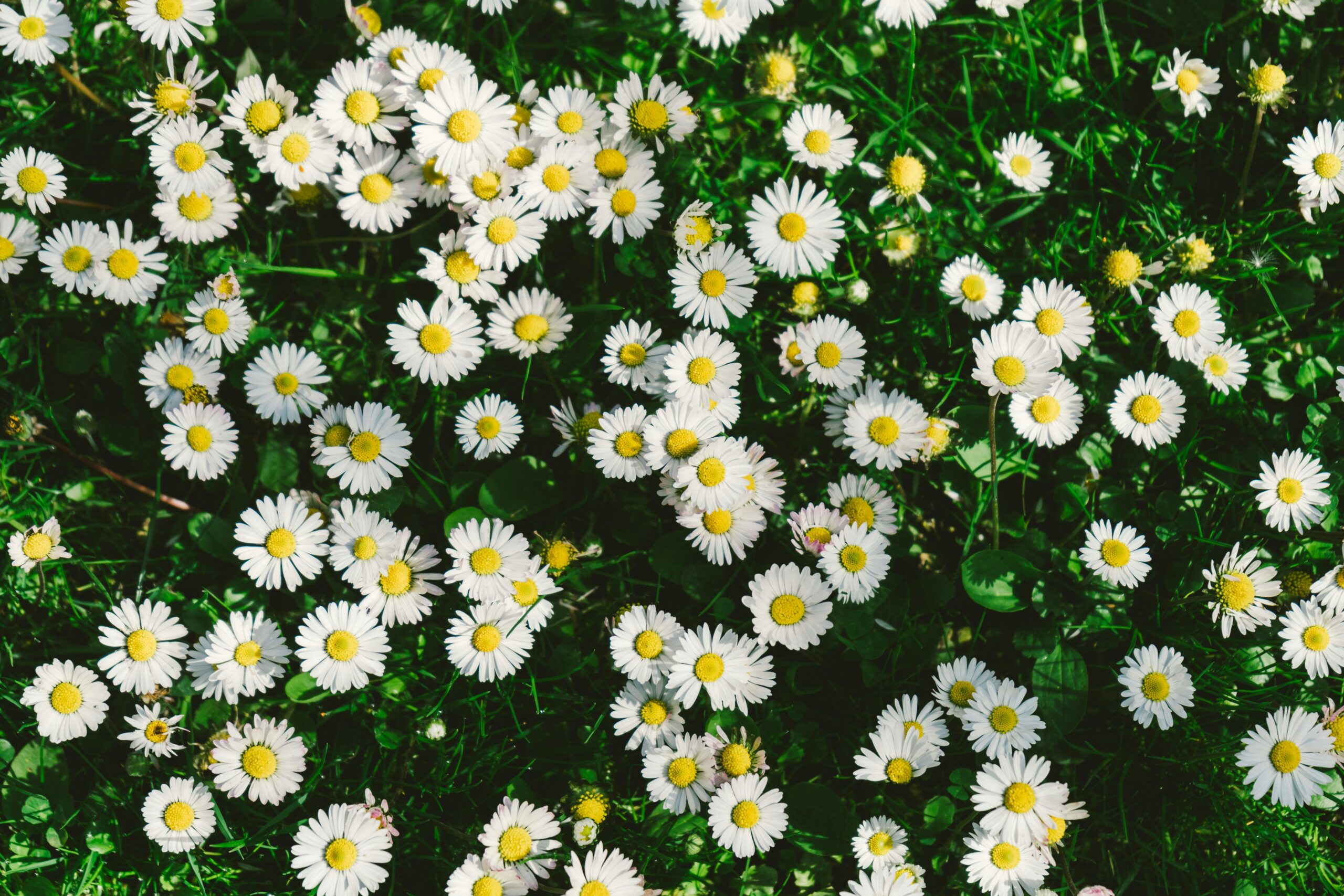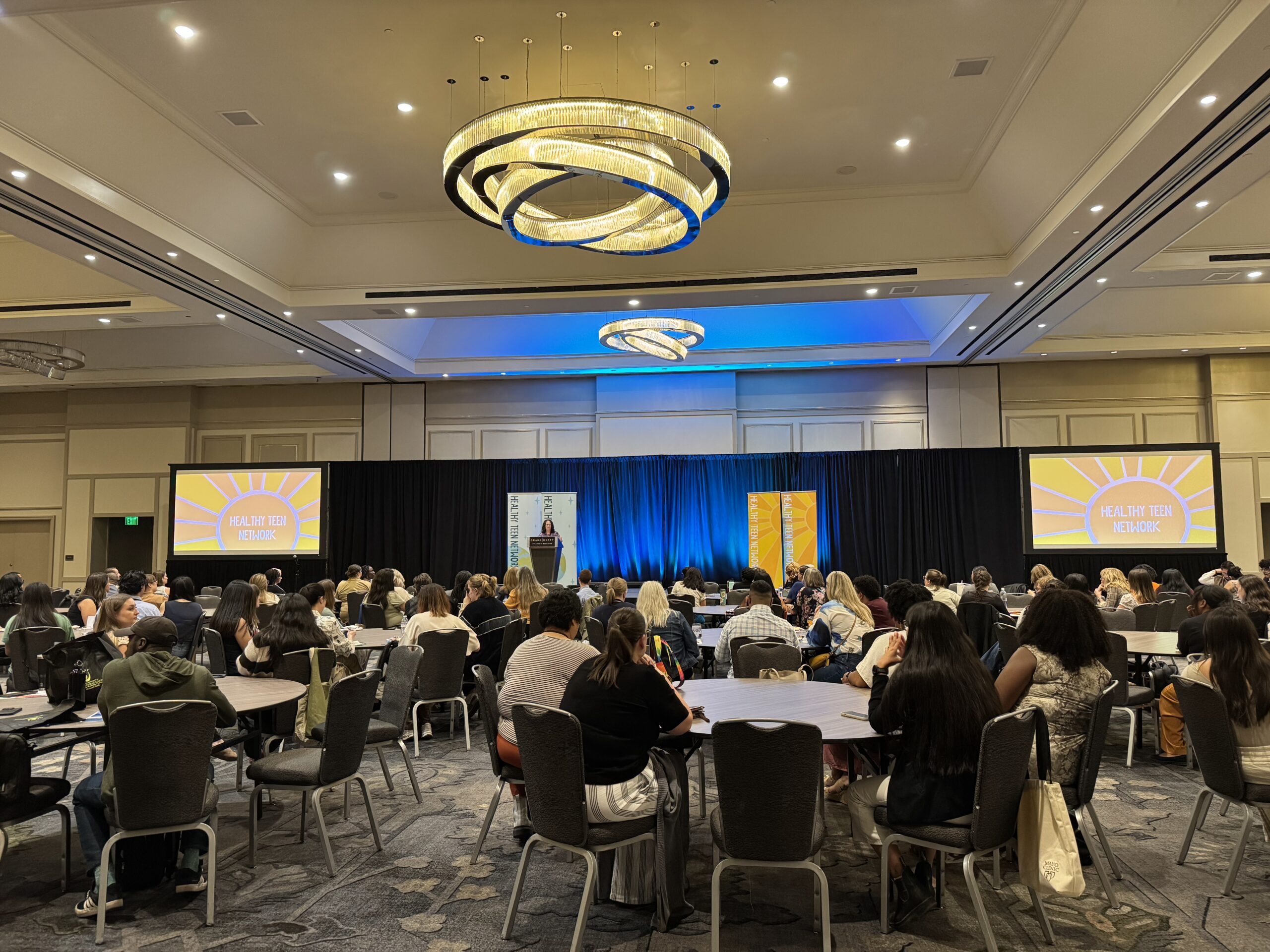I learned that making a pot on the wheel involves endless creative possibilities—and just as many opportunities for things to go sideways.I learned that making a pot on the wheel involves endless creative possibilities—and just as many opportunities for things to go sideways. First, you have to wedge the clay to remove air bubbles. Then, you need to center it on the wheel, a deceptively difficult skill that took me over a year to do consistently. Only then can you begin opening the form, raising the walls, and shaping it into something recognizable.
What could go wrong?
Things change quickly, though. You might start with dreams of a tall vase, but being ever so slightly off-center, or a subtle shift in pressure, can have an outsized impact. As you learn and build skill and confidence, you can adapt on the fly and turn what was supposed to be a vase into a bowl…or a spoon rest. This process involves awareness (“I’m not getting a tall vase out of this anymore.”), creativity (“If I deepen the curve, it could be a cereal bowl!”), and acceptance (“This might need to be a spoon rest.”). Acceptance might also look like knowing when to let go and start over. And once you have your vase/bowl/spoon rest? You still have to lift it off the wheel without warping it. Dry it slowly to avoid cracks. Trim it, so its shape is clear and not too heavy. Let it dry again. Bisque fire it—and cross your fingers it doesn’t develop the dreaded “S-crack” underneath. Then comes glazing: an unpredictable process of mixing chemicals and heat, where science meets art in a kiln that reaches thousands of degrees. It’s a long process, requiring patience. Sometimes it all works out, and you end up with something beautiful. And sometimes, you end up placing your months-long effort on the Brooklyn stoop, hoping a stranger will take it home so you never have to see it again.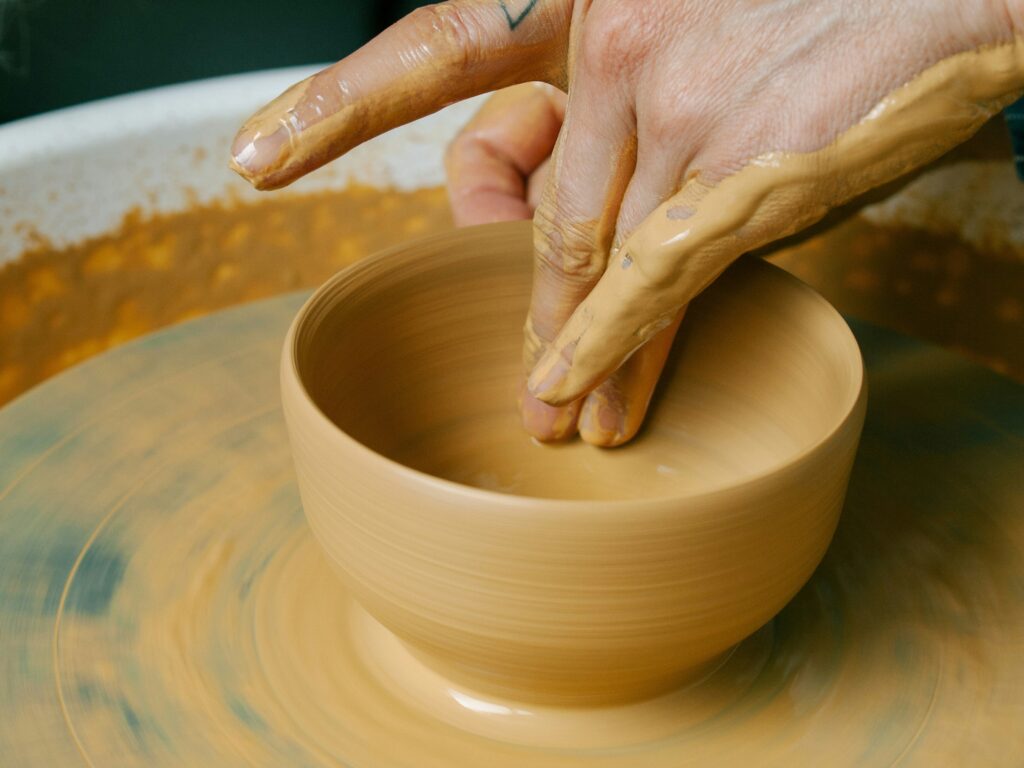
From perfectionism to progress
So, what does this have to do with my work in adolescent sexual and reproductive health education?
Quite a lot, it turns out. Both demand patience, persistence, and the ability to work with shifting materials. You come in with a plan—a curriculum, a framework, an ideal outcome—but the reality can quickly change. Maybe you realize your audience isn’t where you thought they were. Maybe a policy shifts mid-implementation. Maybe something just doesn’t land. And like with a collapsed pot, you have to regroup, rework, and try again.
Pottery taught me that failure isn’t the end—it’s part of the process. Every collapsed bowl has taught me something. Every unpredictable glaze outcome, every imperfection, every time I started over—it’s deepened my understanding of the craft and, more importantly, reminded me how essential curiosity, humility, perseverance, and adaptability are to innovation. You can’t get too attached to an idea (or a pot) because things change quickly.
In sexual and reproductive health education, we’re often tasked with innovating in spaces full of stigma, resistance, or misinformation. That’s not a place for perfectionism.
In sexual and reproductive health education, we’re often tasked with innovating in spaces full of stigma, resistance, or misinformation. That’s not a place for perfectionism. That’s a place for creativity, for iteration, and for a willingness to sit with discomfort and keep going. Just like in pottery, you have to work in partnership with what’s in front of you, stay open to where the process takes you, and trust that something meaningful can still take shape—even if it looks nothing like what you first imagined.
PHOTO BY: TAYLOR HEERY
Randa has a knack for anticipating challenges before they even arise—credit her parents for instilling a lifelong habit of imagining every “what-if” (yes, that means she always packs snacks, just in case). This superpower has fueled her work in designing and improving dozens of innovative health education programs from the ground up. Stubbornly principled and guided by her north star—making her community a little fairer, a little more just—Randa brings both strategic vision and thoughtful action to everything she does. When she is not busy solving problems or dreaming up new ideas, you will find her surrounded by trees, elbows deep in clay at the pottery wheel, planning her family’s next big adventure, or curled up on the couch with her kid, her cat, and a good book. Read more about Randa.

